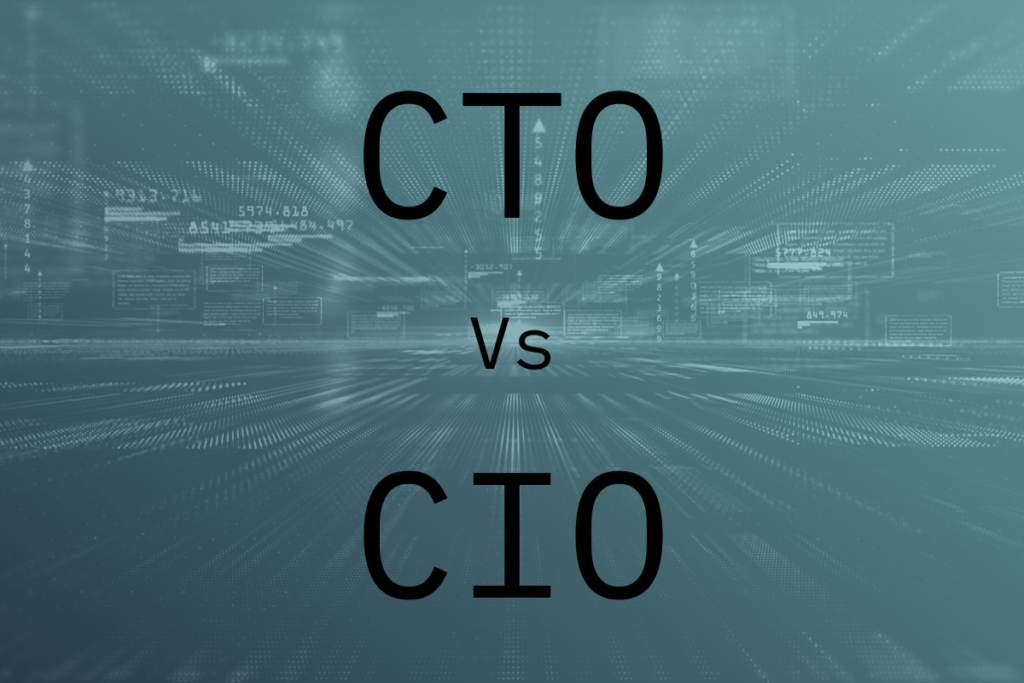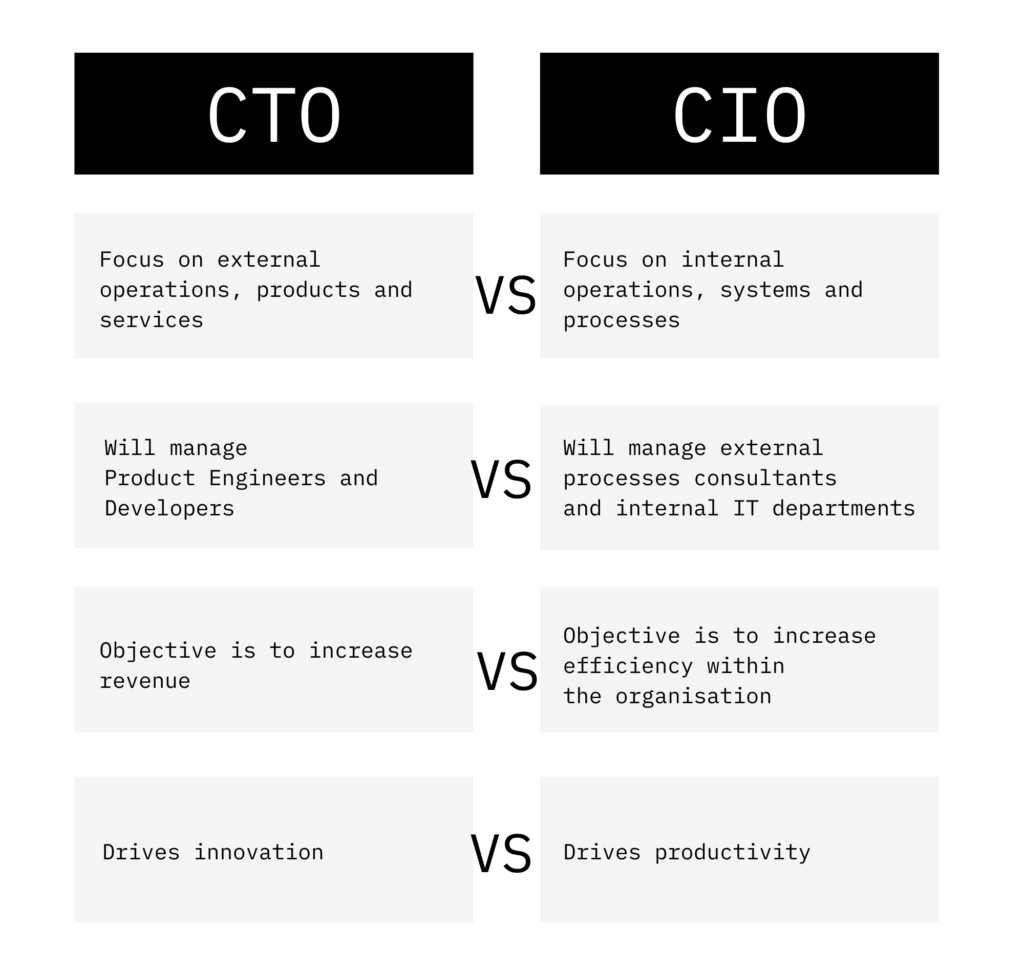As the Technology industry grows, C-Suite teams need to include a technology expert so they can navigate through the industry challenges.
But who do they need? CTO, CIO, CSO, CISO, the list could go on. But, according to Forbes, 63% of CEOs prefer having a CTO or CIO as the technology representative in their C-Suite team.
However, when undertaking the hiring of these roles, there is one common theme, Founders need more clarity on the differences between each role, as they need to know which hire would add value to their specific business.
CTO, abbreviated from Chief Technology Officer, may sound like the role is the same as the CIO, usually lengthened to its full-term Chief Information Officer, but they have different meanings.
In this blog, we outline the roles of a CTO and CIO and their responsibilities, to increase understanding how each hire will impact their technical decisions.
What is the Role of a CTO?
A Chief Technology Officer is the C-Suite member in charge of technological innovation and all other technical aspects of a product or service sold by an Organisation.
As with any C-Suite Leader, the role of a CTO is different in any company they work within.
For example, in a PE & VC Company, a CTO’s primary responsibility will be to steer a team and represent the technology activities on the organisation to the board.
In contrast, a CTO will be more hands-on in a start-up or scale-up. A CTO will be heavily involved in the creating, developing or strategising all technological aspects of the product or service of their organisation.
CTO’s are an essential first C-Suite hire for organisations in the Technology, Fintech and SaaS and Cyber Security industries. Their role is to give expert advice on the market and how the Organisation can gain an advantage through technological innovation to increase their revenue stream.
Responsibilities of a CTO
Despite the scale of a business, a CTO has the responsibility to look outward. They reflect on the market activities with the key interest of driving revenue for an Organisation.
Furthermore, they will also be responsible for managing the organisation’s product developers, creators and engineers, steering initial ideas and driving them into output.
A CTO is responsible for innovation within the Organisation. Whilst it may not be their responsibility to identify innovation opportunities solely, it’s up to the department they lead.
Therefore, when seeking a CTO, identify candidates who can drive innovation out of their team and convince the board to take this direction.
Learn how our Executive Search Consultants find the right CTO for business in our latest case study.
What is the Role of a CIO
In contrast to a CTO, a CIO’s role is to look inward at the Organisation and focus on its processes and systems.
Just like with a CTO, the role of the CIO will change depending on the Organisation’s position and size. However, you will commonly find a CIO in a PE or VC Organisation rather than a Start-up or Scale-up.
This is because a CIO’s overall goal is to ensure that information systems and internal technology processes are maximising time efficiency and productivity for the Organisation. Something Companies do not have the capabilities to focus on when in Start-up and Scale-up modes.
Furthermore, when making their first Leadership hires, organisations opt for C-Suite positions like CFOs and CCOs to assist with externally pushing their way into the market and seed funding rounds.
Responsibilities of a CIO
CIO responsibilities face inward to the organisation. It is solely their responsibility to ensure all information within the business is handled correctly.
Whilst a CTO’s KPIs will be revenue base, CIO usually has productivity and efficiency targets that will indirectly affect the business’s profits.
A CIO will manage all IT systems and tech infrastructure of a business, therefore, is responsible for the internal IT departments or external system consultants.
Summary




